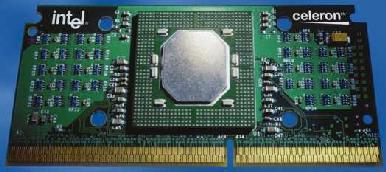 |
|
|
|
In the Forums... |
Posted: February 26, 2001 Written by: Dustin "TimmyC" Jones Intel's Pentium II and Celeron 1997: Next came the dancing men in bunny suits, er, the Pentium II. The P2 came into the world in style, sporting a fancy new design and a new motherboard type, forcing users to upgrade to Slot 1. Having the usual clock speed increases we're used to, the P2 ranged from 233MHz to 450Mhz. The Pentium II was a speed demon for just about any application, including 3D games.  Although expensive, the P2 rocked the competition. 1998: After the release of the Pentium II, Intel went down the server road again; releasing the P2 Xeon. This processor was basically a P2 with a massive cartridge and huge amounts of onboard cache, at exorbitant prices. 1999: During this time, Intel saw a need for a low cost solution and that solution was the Celeron. The Celeron was essentially a downgraded Pentium II. It featured no on-die cache (later the "A" model added 128KB on-die, full speed cache), ran on a 66MHz bus only, and was slower overall (clock-for-clock) than a P2. It debuted at 266MHz and only reached 366MHz within this generation. Later on, Intel released the Celeron 300A - at 300MHz - which featured on-die cache and maxed out at 450MHz. Intel then released another Celeron, which debuted at 366MHz and reached 550MHz. Thanks to the Celeron's low heat levels and high stress yield, the overclocking boom came into effect and is going strong today.  O/C to 400 MHz for under $100? Who could resist? |
||
|
| |||
|---|---|---|---|